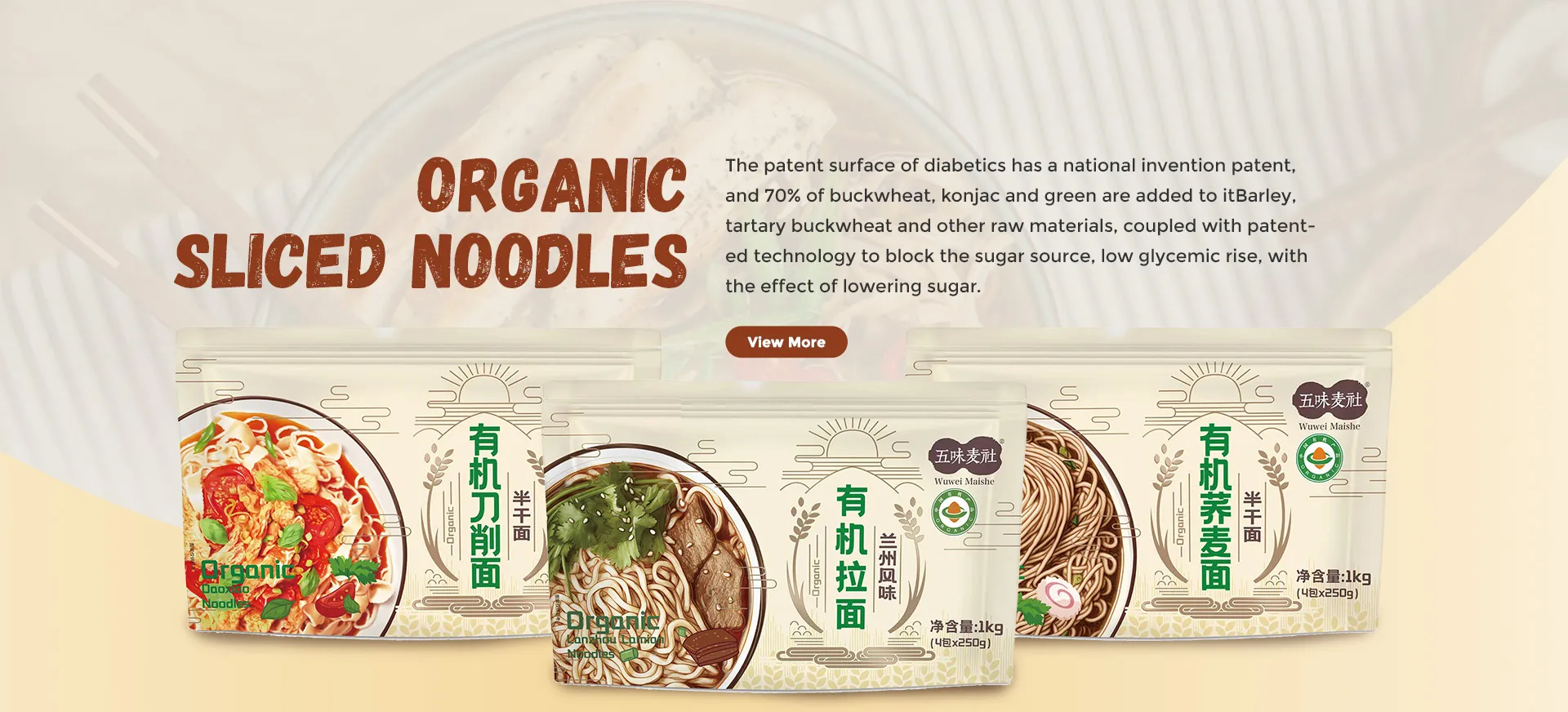Exploring the Health Benefits of Buckwheat Soba Noodles for Your Diet
The Nutritious Journey of Buckwheat Soba Noodles
In the diverse world of gastronomy, few dishes can claim the rich history and nutritional benefits of soba noodles. Originating from Japan, these thin noodles made primarily from buckwheat have captured the hearts and taste buds of food lovers globally. Buckwheat soba noodles are not only a culinary delight but also a powerhouse of nutrition, making them a favored option for health-conscious individuals.
A Brief History
Buckwheat is believed to have been cultivated in Asia for over 4,000 years, and its use in noodle-making began during Japan’s Edo period (1603-1868). The term soba means buckwheat, and traditional soba noodles are mostly composed of buckwheat flour mixed with a small percentage of wheat flour. This unique combination provides a distinct flavor and texture, setting soba apart from other types of noodles.
What makes soba particularly intriguing is its versatility. While it’s commonly enjoyed hot in soups or cold with dipping sauces, it also acts as a perfect base for salads, stir-fries, and even desserts. This adaptability has helped soba noodles to transcend cultural boundaries, making their way onto tables around the world.
Nutritional Benefits
One of the primary reasons buckwheat soba noodles have gained popularity is their impressive nutritional profile. Unlike traditional wheat noodles, buckwheat is gluten-free, making it an excellent choice for those who suffer from celiac disease or gluten intolerance. In addition, buckwheat is a complete protein, meaning it contains all nine essential amino acids necessary for human health. This makes soba a fantastic protein source, especially for vegetarians and vegans.
Buckwheat is also rich in antioxidants, which help combat oxidative stress and inflammation in the body. Notably, the presence of rutin, a flavonoid found in buckwheat, has been linked to improved cardiovascular health. Research suggests it may help lower blood pressure and cholesterol levels, making soba noodles a heart-healthy option.
In terms of vitamins and minerals, buckwheat is a great source of B vitamins, iron, magnesium, and zinc. These nutrients play essential roles in energy production, immune function, and bone health. Furthermore, the high fiber content of buckwheat aids in digestion and helps maintain a healthy weight by promoting a feeling of fullness.
buckwheat soba noodles

Culinary Applications
The culinary applications of buckwheat soba noodles are vast and varied. Traditional Japanese soba can be enjoyed in soups like soba noodle soup or served cold with a soy-based dipping sauce known as “tsuyu.” Adding vegetables, proteins, or even a soft-boiled egg to the dish enhances its nutritional value and visual appeal.
In recent years, fusion cuisine has brought innovative twists to soba noodles. Chefs have begun incorporating soba into dishes such as stir-fried noodles with vegetables and tofu, soba salads with sesame dressing, or even buckwheat noodle bowls topped with grilled meats and fresh herbs. The nutty flavor of buckwheat complements a range of ingredients, making it a versatile choice for both traditional and contemporary recipes.
Easy Cooking Tips
Cooking soba noodles is simple but requires attention to detail to achieve the perfect texture. Start by bringing a pot of water to a boil, adding the noodles, and cooking them for about 4 to 6 minutes. Be sure to stir occasionally to prevent sticking. Once cooked, it is essential to rinse the noodles under cold water for a few seconds to halt further cooking and remove excess starch, which can make the noodles gummy.
When preparing soba dishes, consider balancing flavors and textures. Adding crunchy vegetables, creamy sauces, or fresh herbs can elevate the dish. Soba noodles also pair well with a variety of proteins, from grilled chicken to edamame, expanding their appeal to different palates.
Conclusion
Buckwheat soba noodles are more than just a meal; they are a nutritious and versatile component of a healthy diet. Whether served hot or cold, in traditional or modern dishes, soba noodles offer a delicious way to enjoy the benefits of buckwheat. Their rich history, impressive nutritional profile, and culinary flexibility make them an essential addition to any kitchen. So next time you’re craving something nourishing, consider reaching for a bowl of soba noodles and embark on a delicious journey of flavors and health.
-
Unleash Your Inner Chef with Delectable Italian Pasta CreationsNewsAug.01,2025
-
Savor Health and Flavor: Irresistible Soba Noodles for Sale Await!NewsAug.01,2025
-
Nourish Your Body with Premium Organic Ramen - A Culinary Delight AwaitsNewsAug.01,2025
-
Elevate Your Dishes with Our Exquisite Kinds of Egg NoodlesNewsAug.01,2025
-
Dive into Flavorful Convenience with Our Ramen OfferingsNewsAug.01,2025
-
Discover Exquisite Types of Naengmyeon and Chilled Soba NoodlesNewsAug.01,2025
-
Is Whole Wheat Pasta Healthy?NewsMay.30,2025
Browse qua the following product new the we

















































































































